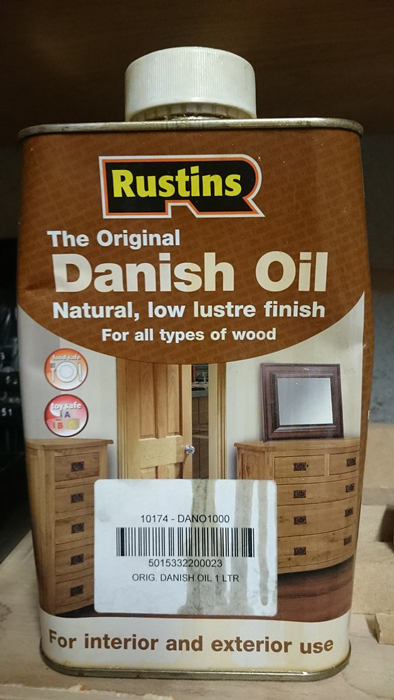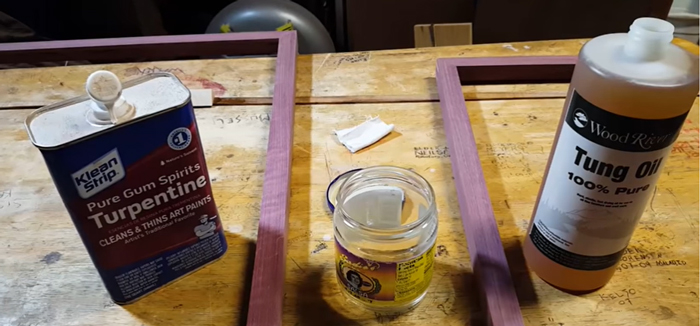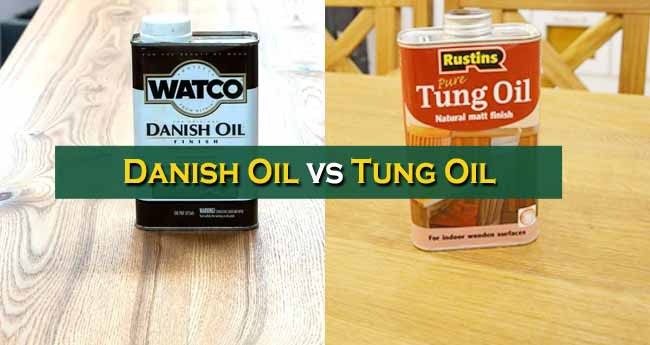After a lot of hours spent sanding wood, you want the wood to have a beautiful finish, but you are torn between whether to use Danish oil or tung oil. This article is aimed at helping you decide which oil you want to use to finish your woodwork.
Both these oil are wood finishing oil, but both oil function in different manners. Tung oil is a component used to make Danish oil. However, the addition of other materials makes Danish oil different in nature from tung oil.
Now, this article is aimed at helping you to decide which oil you want to use to finish your woodwork.
Let’s find out more about these oils!
Danish Oil
Danish oil is basically a mixture of various components such as tung oil or linseed oil, as well as a mixture of varnish, mineral spirits, etc. There is no fixed formula of Danish oil, and so it varies according to the manufacturer.

Now, Danish oil is usually applied over a bare surface of wood in the direction of the grain for better results. It penetrates the wood easily and dries faster due to its mixture of various components.
This oil is ideal for beginners, as its application is quite easy. It will protect your woodwork from scratches, damages done by chemical or heat, stains, etc., leaving behind a beautiful satiny finish.
Unlike other oils, Danish oil does not become yellow with age. If you have a particular shade in mind, you can simply mix various tints to get your desired shade, and then you can also use it as a sealer or primer. It is water-resistant and is durable as well.
Advantages of the Danish Oil
So in a nutshell, Danish oil has the following advantages:
Very Easy to Apply
It is perfect for you if you are a beginner or novice woodworker as you can just apply it on the bare surface of the wood without any hassle.
Great Finish
It leaves behind a satiny yet hard finish.
Dries Faster than Tung Oil
As Danish oil is diluted with other components, it does not take days or weeks to cure. And it needs fewer coats and curing time as well.
Waterproof
Water damages can ruin all your hard work, so make sure to pick up Danish oil that will leave a waterproof coating on your furniture.
Easily Penetrates Wood
It seeps into the wood faster than other oils such as Tung oil and so can be used on hardwoods such as cherry, oak, maple, ironwood, and mahogany.
Disadvantages of the Danish Oil
Unfortunately, Danish oil has quite a few disadvantages as well.
Not as Durable as Tung Oil
When you compare its durability to tung oil, this one doesn’t last long.
Not Ideal for Kitchen Bowls or Other Kitchen Wares
It is very difficult to know what chemical compounds are present in Danish oil. So it may be hazardous for health if it is used to make materials in which food is stored.
Spontaneous Combustion
One advantage of Danish oil is that it hardens as it comes into contact with air (if it consists of polymerized linseed oil). However, there is also a possibility of spontaneous combustion due to exothermic combustion.
So to avoid any danger, be careful and make sure to either let the rag used to apply Danish oil is placed flat to dry out or soaked thoroughly in water before discarding it.
Frequent Maintenance Is Required
It needs maintenance more frequently than any other type of oil treatment.
Tung Oil
Tung oil has been in use for centuries; it was used by Chinese in building ships and was also mentioned by Confucius in about 400 BC in his writings. It is derived from nuts from tung trees that are indigenous to China, and so is also known as China wood oil.

As it is organic and all-natural, tung oil does not have any toxic elements. Tung oil provides the best waterproof coating amongst all oil treatments. It also provides a beautiful golden color to wood.
However, tung oil penetrates wood slowly as it is 100% oil, so it has to be thinned down with thinner or mineral spirits.
Tung oil forms a hard surface once cured; at the same time, it is water-proof, durable, and has a glossy finish that gives the wood a ‘wet’ look. Amongst all other oil treatments available, Tung oil is the only on that polymerizes (hardens) completely and does not darken as it ages and is less vulnerable to molds.
Advantages of the Tung Oil
Here are a few advantages of the tung oil:
Waterproof
It is known for being waterproof and has been used for hundreds of years for its ability to make wood waterproof. Once it is properly applied and cured, your furniture will be safe from absorbing water.
Beautiful Color
Tung oil leaves an all-natural transparent yet deep golden, wet look on the surface of the wood.
All-Natural
As it is produced from nuts from the tung tree, it’s completely organic and good for the environment.
Elastic
Tung oil hardens completely, but it also remains wonderfully elastic, and so contraction or expansion of wood does not affect the coating. Furthermore, it prevents cracking on the surface and increases the lifespan of the wood.
Offers a Hard Protective Layer
As Tung oil polymerizes completely after it is cured, it leaves behind a very hard coating on the surface of the wood, and so keeps it safe from scratches, acidic components, dents, etc.
Safe for Kitchen
Tung oil is safe to be used in making kitchen utensils as it is an all-natural and non-toxic product. However, there is a variety of tung oil in the market available, which is made thinner by adding chemicals, so be careful and read the label.
Disadvantages of the Tung Oil
Tung oil has disadvantages, as well. They are:
Penetration Isn’t Quick
Greater amount of effort is necessary as pure tung oil penetrates wood very slowly. Unlike Danish oil, tung oil requires 6 or more coats to stain the wood properly. Also, because of its slow penetration of the wood, sanding before every application of tung oil is required.
Lengthy Process
It takes a long time to cure woods coated with Tung oil properly. You need to wait 24 or more hours for the wood to cure properly before you can apply another coating of tung oil.
Isn’t Easy to Store
Tung oil is difficult to store as you need to keep it away from a lot of heat and light. But this applies only for tung oil that is 100% natural, not those that have been mixed with thinners.
Conclusion
At the end of the day, what type of oil you want to use depends on the time and effort you are willing to put in your woodwork.
If it is a masterpiece and you have a lot of time, you can go for Tung oil as it is known for its color and durability. But if you are short on time, you can go for Danish oil as it cures faster and it is easier to use.

